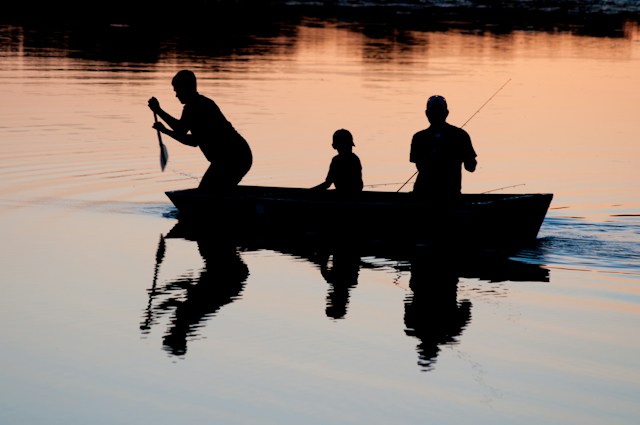
Destructive fishing practices threaten marine ecosystems and the marine animals who depend on them for sustenance, as well as harming fishermen by diminishing their livelihoods and making it harder to catch enough fish to support themselves and their families.
Blast fishing (also referred to as dynamite fishing or fish bombing) involves using explosives to stun schools of fish for easy collection.
1. Avoid fishing at night.
Before heading out on night fishing trips, always inform someone where and for how long you plan on being out. This way if anything should occur they know where to look if something were to happen that requires their assistance.
When fishing at night, it is also a good idea to wear brightly-colored clothing so other boaters can easily spot you. Additionally, glow-in-the-dark lures, beads and attractants will help your bait stand out against its background in darkness.
At darker waters such as Loch Ness night fishing, using an ultra-sensitive line is recommended, to make detecting even small nibbles easier. Try fishing along the bottom as much as possible and don’t be intimidated to venture deeper water if possible.
2. Don’t troll.
Trolling involves running multiple lines behind a boat and dragging lures or bait along them. Although trolling is an increasingly popular form of fishing, it has also become one of the most detrimental to ocean ecosystems. Setting out multiple lines requires hard work, then pulling back when none bite, leaving lines vulnerable to being hit by something or getting dirty or tangled up; additionally, trolling cannot be left alone if something does strike as you must turn back around and check all your lines if one gets hooked – an extremely time consuming process!
Trolling can also be an ineffective use of gas as the ideal speed can change daily or weekly for different species. Instead of trolling in one direction, try staggering your lines’ distances from behind your boat in different directions to cover more water and create more action. Jigging rods while trolling can add randomness that increases strikes.
3. Don’t use cyanide.
Cyanide fishing is a controversial practice used to capture tropical fish for sale to aquarium retailers. Cyanide poison is used to stun reef fish before collecting. Cyanide fishing can be hazardous, costly and destructive of coral reef ecosystems – practices like these must not be utilized.
Fishermen often employ this destructive practice by dispensing bottles of cyanide solution into reef holes and crevices, then waiting until fish have been paralysed to grab them out from hiding spots. This practice damages coral by disrupting its ecosystem while simultaneously endangering fishermen themselves who face daily encounters with deadly poison without proper safety protections in place.
Cyanide pollution is an ongoing threat in many parts of the world, but particularly damaging in the Indo-Pacific due to people seeking out specific species for aquarium displays. Consumers can help fight this cyanide threat by purchasing captive-bred fish or using an app like Tank Watch which shows whether a fish was caught from nature or was grown captively.
4. Don’t use bait.
Baiting fish to lure fish is one of the most destructive fishing techniques, as it results in coral reef destruction. This poses a huge problem as coral reefs provide shelter and sustenance to many marine life forms as well as food sources for other creatures that inhabit them. Furthermore, bait pollution pollutes both marine life and our water sources, possibly leading to disease outbreaks that affect humans as well. Although laws exist to protect marine ecosystems such as reefs from destruction by fishing companies and governments alike, their enforcement may not always be possible in places affected by poverty and limited funding – so it would be best to opt out altogether by simply not using bait altogether!
5. Don’t use nets.
As nets can cause extensive habitat degradation and unintended catch, more selective fishing methods such as spearguns and ringnets may provide better results while still respecting environmental concerns and complying with regulations. By doing this, more fish will be caught while simultaneously respecting both environment and laws.
Attaining an integrated approach to destructive fishing requires taking into account its environmental, social and economic repercussions (see Morgera and Nakamura 2021). A definition for destructive fishing should also take into account human rights protection and intangible heritage preservation of indigenous and traditional small-scale fisheries that have been undermined by globalized and capitalist practices.
Alana Malinde is a two-part blog post author. She holds a Lecturer position in International Environmental and Energy Law from the Faculty of Law of University of the West Indies at Cave Hill; is also Executive Member and Co-Investigator with UKRI GCRF One Ocean Hub.

Eugene is an environmental journalist with a focus on fisheries and aquatic biodiversity. Her work centers on exploring the balance between fishing industries and marine conservation, offering insights into policies, innovations, and sustainability challenges.
